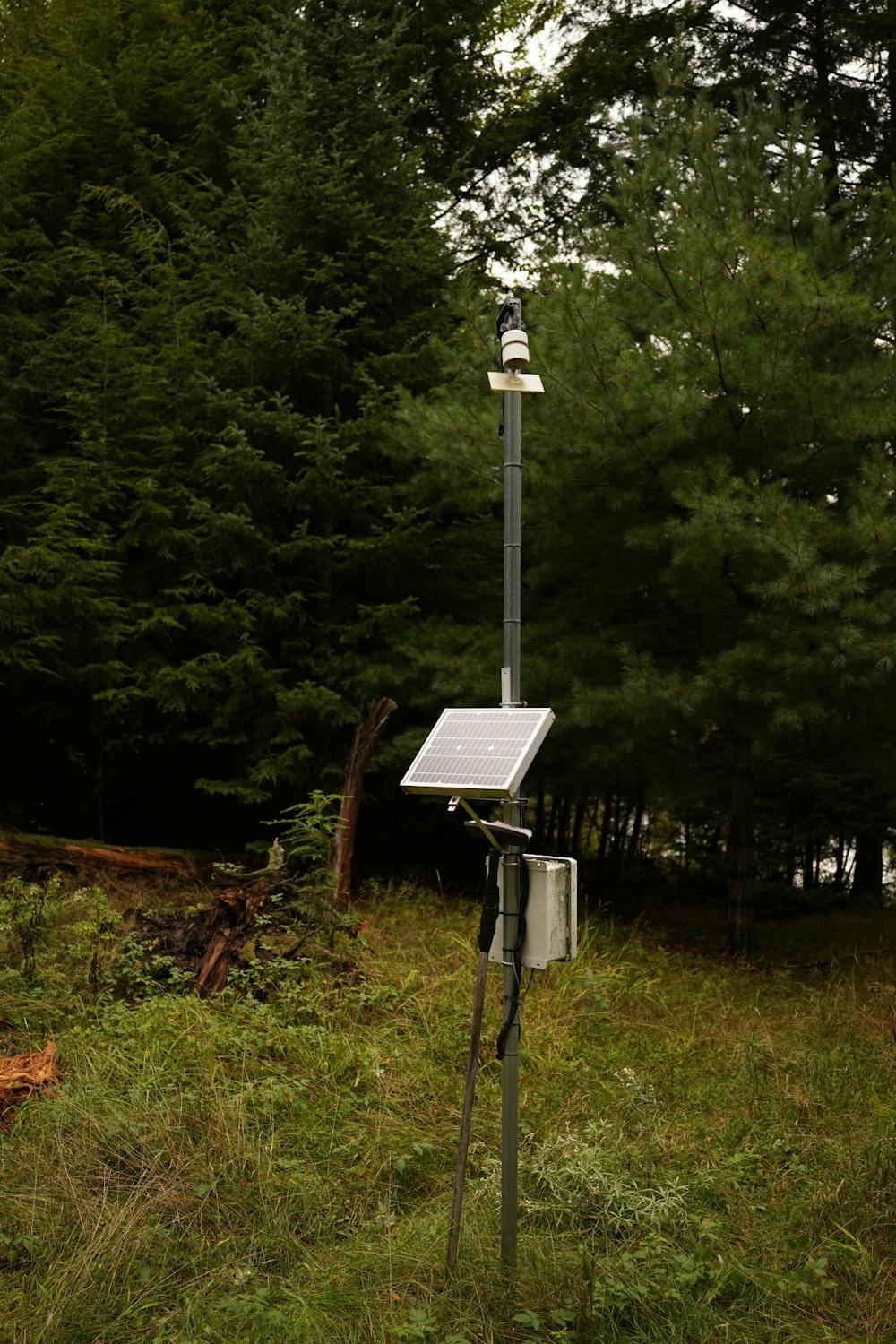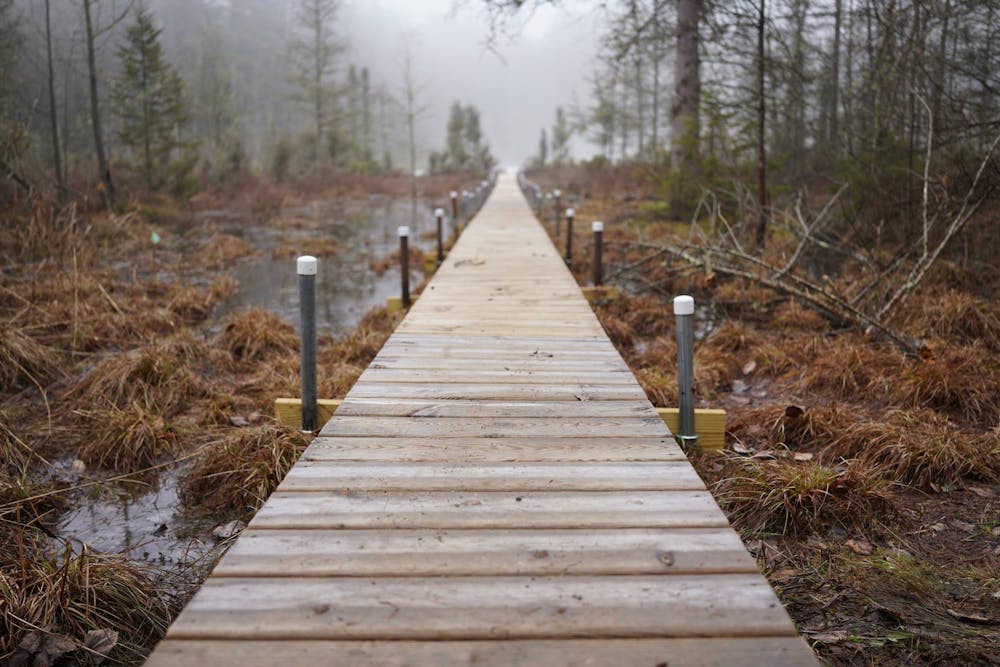Driving north, away from the bustling streets of Madison and its cookie-cutter suburbs, is a window into Wisconsin's landscapes. The scenery along US-51 changes from city to suburb, from suburb to field. The vast plains of central Wisconsin give way to mixed forest as you drive through Wisconsin Dells and Stevens Point. Soon, the highway is engulfed in the beautiful pine forests of the northern highland.
This is the pilgrimage that research, ranging from limnologists to entomologists and everything in between, makes from the University of Wisconsin-Madison to Kemp Natural Resource Station each year.
Located on the shore of Tomahawk Lake on Kemps Point, Kemp Station was purchased by Edward Kemp in the 1800s. Kemp envisioned a summer home to be built on the peninsula, though he died before construction began. His wife Minnie and daughter Francis oversaw the construction of several log buildings in the 1900s.
In 1960, however, the 135-acre peninsula was donated to UW-Madison for the purpose of research and conservation. Since then, Kemp station has grown to 231-acres with several distinct ecosystems, including lake coves, bogs and second-growth forests. Currently, Kemp station supports 39 active research projects ranging from wood turtle conservation and walleye thermal ecology to white spruce tree reproduction and glacial ecology.
There are two long term research projects currently underway to Kemp station: deer exclosure and long-term bat monitoring.
Hidden in the hemlock forests you can find the high fences marking out deer exclosures. Deer exclosure is the practice of creating deer free zones to monitor habitat growth and diversity in the absence of deer. Ten deer exclosures were erected in 2012, and serve as research and educational tools. The exclosures are visited regularly by field classes around the state and offer a glimpse into a deer free world.
Tucked away in a forest clearing created by heavy windfall close to Tomahawk Lake is the bat monitoring station. A strange piece of equipment that looks out of place in the natural environment, the solar powered bat monitoring station was established in 2007 by DNR bat ecologist David Redell and his colleague Paul White. The device records acoustic signals from bats as they fly through the forests and along Tomahawk Lake. Researchers are able to identify different species of bats from their unique calls, allowing us to identify and monitor the different bat species in Wisconsin.

While Kemp Station is closed to those without a permit, many natural science courses make the trek up to look at insects, mammals or plants. Additionally, Kemp hosts various outreach events throughout the year, including Insect Fest and Fungi Fest.
Should you have the opportunity to visit Kemp Station, take advantage of the natural beauty and scientific resources available. Take a long hike around Tomahawk Lake or a trip down to Jyme Lake for a walk down the boardwalk. There is no place like Kemp Station; it will support researchers for decades to come.







